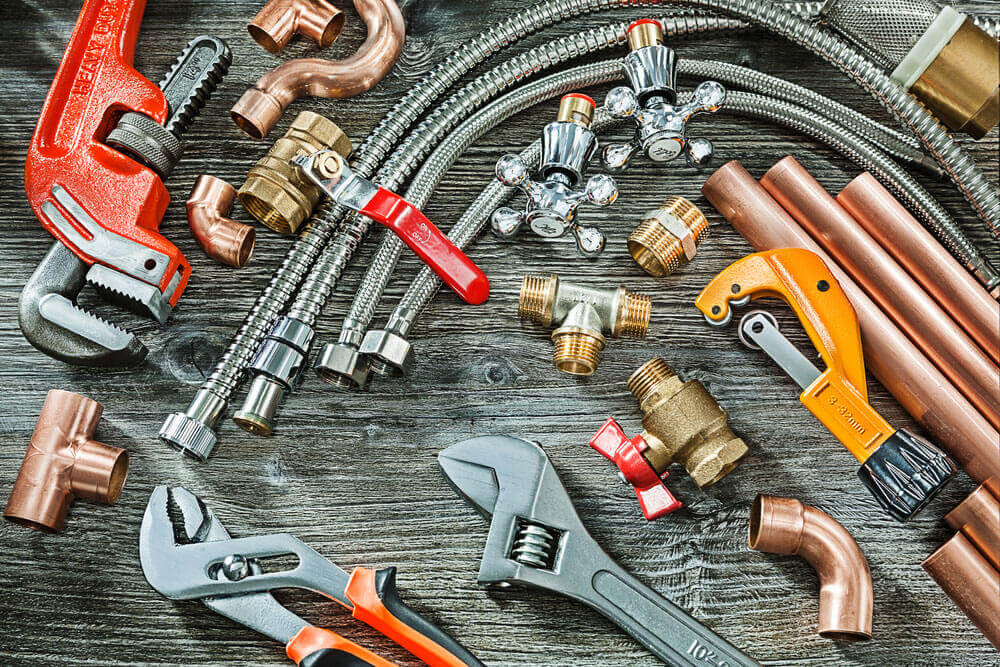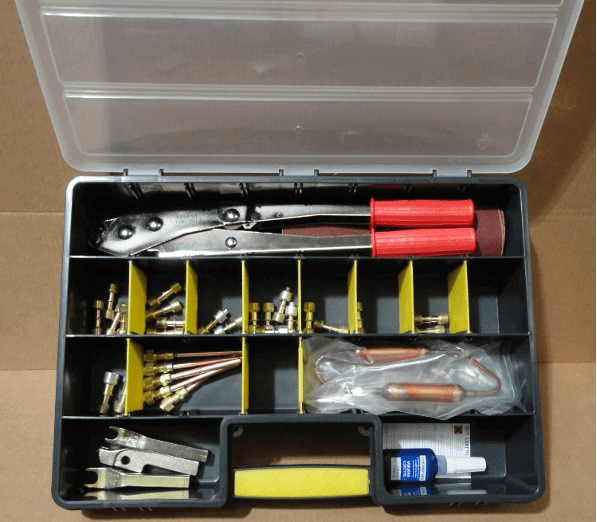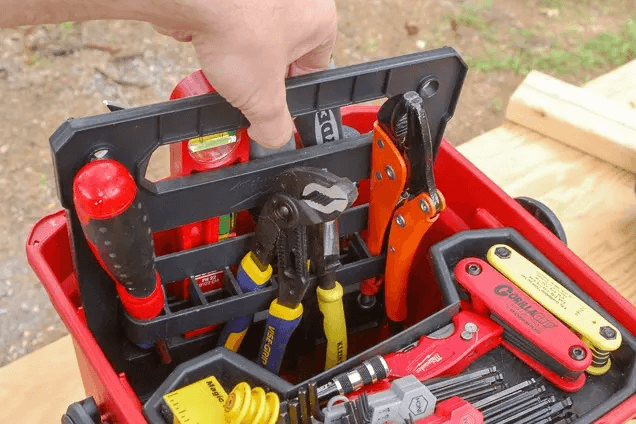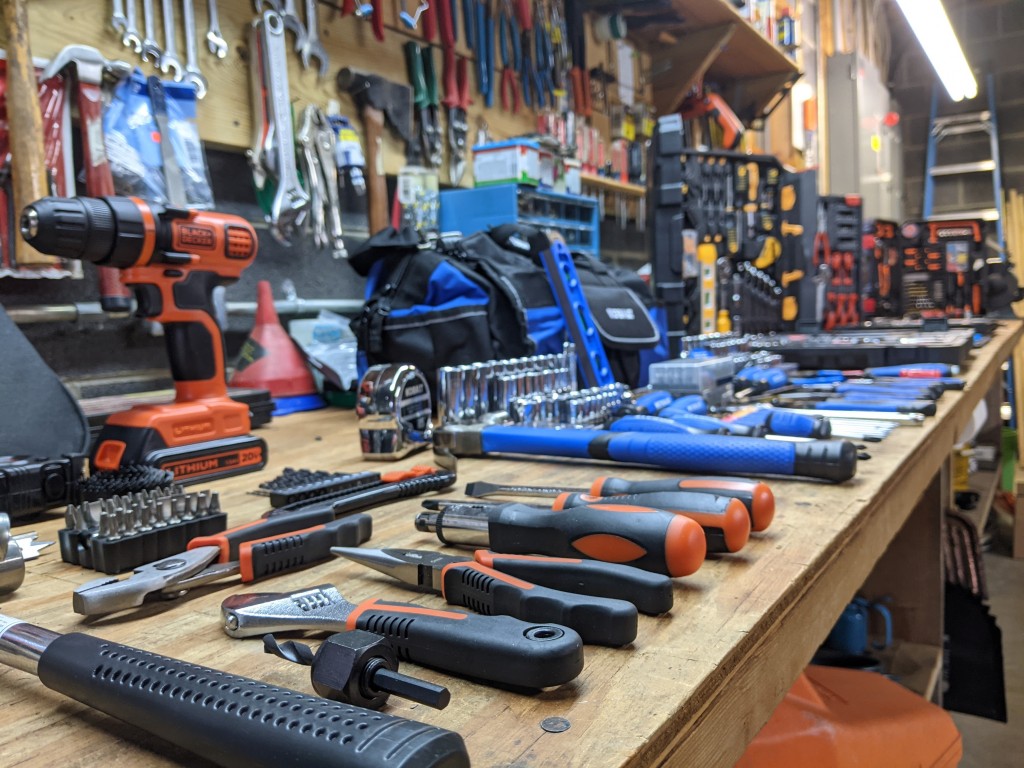
In the world of home maintenance, DIY appliance repair is a valuable skill that not only saves you money but also empowers you to take control of your household’s functionality. However, to embark on this journey successfully, you’ll need a well-equipped toolkit that’s as diverse and reliable as a Swiss Army knife. In this comprehensive guide, we’ll explore in-depth the must-have tools and equipment, offering tips and insights that will transform you into a bona fide appliance repair wizard.
The Significance of a Well-Equipped Toolkit
Before we dive into the specifics of assembling your DIY appliance repair toolkit, let’s reflect on why it’s crucial to have the right tools at your disposal. We all know that an artist needs the right brushes and a chef their trusty knives, and the same principle applies to DIY appliance repair. Your toolkit is your arsenal, the foundation upon which you’ll build your repair prowess. Having the right tools ensures efficiency, precision, and, most importantly, safety.
A well-prepared toolkit reduces the chances of frustration mid-repair when you realize that you lack a critical tool to complete the job. It allows you to approach each task with confidence, knowing you have the instruments necessary to conquer any challenge. Thus, a well-equipped toolkit is more than just a collection of tools; it’s your key to becoming a DIY appliance repair virtuoso.
Essential DIY Appliance Repair Tools: A Closer Look

Let’s delve into the heart of your toolkit – the essential tools that will make your appliance repair endeavors not only possible but enjoyable:
- Screwdriver Set: The Workhorse of Your Toolkit: A high-quality screwdriver set is the backbone of your toolkit. It’s versatile, with various types of screwdrivers to suit different tasks. You’ll find yourself needing both flathead and Phillips screwdrivers frequently. Whether you’re opening the back of your washing machine or removing a panel from your oven, these trusty tools are indispensable.
- Wrench Set: The Versatile Fixer: In the world of appliance repair, you’ll often encounter water or gas connections that require precise handling. A wrench set is non-negotiable for tasks like connecting and disconnecting hoses and pipes. An adjustable wrench is particularly handy since it allows for flexibility in fitting various nut sizes.
- Multimeter: The Electric Detective: For diagnosing electrical issues in your appliances, a multimeter is your trusty companion. This sophisticated tool enables you to test circuits, outlets, and components, ensuring they function correctly. It’s an essential instrument for detecting issues before they become full-blown problems.
- Pliers: The Problem Solvers: A pair of needle-nose pliers and slip-joint pliers are invaluable for gripping, bending, and cutting wires or other materials. They come to the rescue when you need a steady hand or a secure grip on a small component. These pliers will become your best friends during your DIY appliance repair journey.
- Voltage Tester: The Safety Guardian: Safety is paramount in DIY appliance repair, especially when dealing with electrical components. A voltage tester ensures you’re not about to receive a shocking surprise when working with live circuits. This small yet mighty tool provides peace of mind, confirming whether a circuit is live or not.
- Appliance Dolly: The Heavy Lifter: When it comes to moving heavy appliances, an appliance dolly is a game-changer. It not only makes transportation more manageable but also reduces the risk of straining your back. Your fridge or washing machine won’t seem as daunting when you have this trusty assistant.
- Nut Driver Set: The Fastener’s Best Friend: Appliances are held together by an assortment of fasteners and screws. A nut driver set is essential for dealing with these components. Ensure you have a range of sizes to accommodate various fasteners commonly found in appliances. You’ll be thankful for this tool when you’re knee-deep in a repair.
- Cordless Drill: The Time-Saver: Investing in a cordless drill with a set of bits is a wise decision. It can be used for drilling holes, driving screws, and performing a range of other tasks with ease. A cordless drill is a time-saving tool that becomes a reliable companion during your appliance repair projects.
- Flashlight: The Illuminator: Not all appliance repair tasks are conducted in well-lit spaces. A reliable flashlight can be a lifesaver when you’re working in dimly lit areas or attempting to peer into tight, shadowy corners. Ensure you always have a flashlight at the ready in your toolkit.
- Tape Measure: The Precision Tool: Accurate measurements are crucial in appliance repair, particularly when dealing with installations or assessing available space. A tape measure ensures that everything fits perfectly, reducing the likelihood of costly errors.
- Safety Gear: Your Guardian Angels: Never underestimate the importance of safety gear. Invest in gloves to protect your hands, safety goggles to shield your eyes, and ear protection to preserve your hearing. A comfortable and safe repair environment is key to a successful project.
Bonus Tools for the Enthusiasts
If you’re an avid DIY enthusiast or aspire to tackle a wider range of appliance repairs, consider adding these bonus tools to your kit:
- Circuit Tester: The Electrical Sleuth: This specialized tool aids in identifying faulty circuits within your appliances. It simplifies the process of pinpointing problems, making your diagnosis and repair more efficient.
- Pipe Cutter: The Plumbing Pro: For repairs related to plumbing or appliances with water connections, a pipe cutter can be a lifesaver. It facilitates the clean and precise cutting of pipes and their subsequent resealing.
- Refrigeration Gauges: The Cooling Companions: When dealing with refrigerators and air conditioners, refrigeration gauges are indispensable. They allow you to monitor and adjust coolant levels, ensuring optimal performance.
- Oscillating Multi-Tool: The Versatility Virtuoso: An oscillating multi-tool is a versatile addition to your toolkit. It can handle a variety of tasks, from cutting to sanding and scraping, making it a valuable asset for any DIY enthusiast.
Organizing Your Toolkit: A DIY Repairer’s Dream
Once you’ve acquired your arsenal of tools, the next crucial step is organization. A well-organized toolkit not only saves time but also prolongs the lifespan of your tools. With an organized approach, you’ll always know where to find the tool you need, keeping your projects on track and hassle-free.
Here’s a comprehensive table that will help you organize your toolkit efficiently:
| Tool | Storage Location |
| Screwdriver Set | Small Compartment |
| Wrench Set | Hanging Rack |
| Multimeter | Zippered Pouch |
| Pliers | Toolbox Drawer |
| Voltage Tester | Small Compartment |
| Appliance Dolly | Garage or Utility Room |
| Nut Driver Set | Toolbox Drawer |
| Cordless Drill | Hanging Rack |
| Flashlight | Hanging Hook |
| Tape Measure | Toolbox Drawer |
| Safety Gear | Storage Bag |
Remember, a well-organized toolkit is an essential companion in your DIY appliance repair journey. It not only saves time but also ensures your tools remain in optimal condition for years to come.
Where to Purchase Your DIY Appliance Repair Tools
Now that you’re equipped with the knowledge of the essential tools for DIY appliance repair and their proper organization, you may wonder where to acquire these valuable instruments. Here are some options:
- Local Hardware Stores: Your local hardware store is an excellent place to start. Visiting a physical store allows you to see and feel the tools in person, and you can benefit from the expertise of the staff. They can offer recommendations based on your specific needs.
- Online Retailers: In the age of e-commerce, numerous online retailers offer a vast selection of tools for DIY appliance repair. Websites like Amazon, Home Depot, and Lowe’s provide a wide range of options. Customer reviews and ratings can guide your choices, and you can conveniently have your tools delivered to your doorstep.
- Second-Hand Shops and Garage Sales: For those on a budget or looking for vintage and reliable tools, consider checking out second-hand shops or garage sales. You might stumble upon high-quality tools at a fraction of the price of new ones. A bit of TLC can often restore older tools to their former glory.
DIY Appliance Repair: Are You Ready for the Challenge?

With your toolkit in hand, brimming with essential and bonus tools, you’re poised to embark on your DIY appliance repair adventures. But are you truly prepared? It’s essential to remember that safety should always be your top priority. If you’re ever in doubt about a repair, lack the required expertise, or feel uncomfortable with the task at hand, it’s best to call a professional technician.
However, for those smaller issues, routine maintenance, and a sense of curiosity and adventure, your well-equipped toolkit is your ticket to success. With the right tools, a can-do attitude, and a bit of guidance, you’re ready to tackle appliance repairs and maintenance with confidence.
In conclusion, assembling a toolkit for DIY appliance repair is akin to crafting a symphony. Each tool plays a unique role, harmonizing together to create the perfect repair experience. From the versatility of a screwdriver set to the precision of a multimeter, your toolkit is your orchestra, and you’re the conductor. With the right equipment, an organized approach, and a commitment to safety, you’ll master the art of DIY appliance repair and transform your home into a sanctuary of functionality. Happy repairing, and may your appliances stay in tip-top shape!
DIY Appliance Repair Tools: Frequently Asked Questions
If you’re considering embarking on DIY appliance repair or looking to expand your toolkit, you likely have questions. This FAQ section provides answers to some of the most common queries about DIY appliance repair tools.
1. Why should I consider DIY appliance repair?
DIY appliance repair can save you money, offer a sense of accomplishment, and give you more control over the maintenance of your household appliances. It’s a valuable skill that allows you to troubleshoot and fix minor issues on your own.
2. What are the essential tools for DIY appliance repair?
The essential tools for DIY appliance repair include a screwdriver set (flathead and Phillips), wrench set, multimeter, pliers, voltage tester, appliance dolly, nut driver set, cordless drill, flashlight, tape measure, and safety gear (gloves, safety goggles, ear protection).
3. Do I need to purchase all the bonus tools for DIY appliance repair?
The need for bonus tools, such as a circuit tester, pipe cutter, refrigeration gauges, and an oscillating multi-tool, depends on the complexity and variety of repairs you plan to undertake. These tools are useful for specific tasks and can be added to your toolkit as needed.
4. Where can I purchase DIY appliance repair tools?
You can purchase DIY appliance repair tools from local hardware stores, online retailers (e.g., Amazon, Home Depot, Lowe’s), and even second-hand shops or garage sales if you’re looking for budget-friendly options.
5. Is it essential to organize my toolkit?
Yes, organizing your toolkit is essential. An organized toolkit saves time, prevents frustration, and extends the lifespan of your tools. Use compartments, racks, pouches, and drawers to keep your tools well-arranged and readily accessible.
6. How do I stay safe while performing DIY appliance repairs?
Safety is paramount in DIY appliance repair. Always wear safety gear, such as gloves, safety goggles, and ear protection. Use a voltage tester to check for live circuits and disconnect appliances from power sources when working on them. If you’re unsure or uncomfortable with a repair, it’s best to consult a professional technician.
7. Can I repair any appliance myself?
The feasibility of DIY appliance repair depends on your level of expertise and the complexity of the repair. While you can handle minor repairs and maintenance, more complex or potentially hazardous tasks should be left to professionals. It’s important to assess your skills and the specific appliance’s requirements before attempting a repair.
8. Do I need prior experience to perform DIY appliance repair?
Prior experience can be helpful, but it’s not always necessary. Many repair tasks can be learned through online tutorials, manuals, and hands-on practice. Start with simple projects to build your confidence and skills, and gradually tackle more challenging repairs.
9. How can I find DIY appliance repair guides and resources?
You can find DIY appliance repair guides and resources online, in appliance user manuals, and through instructional videos on platforms like YouTube. There are also books and online forums dedicated to appliance repair where you can seek advice and guidance.
10. What are the benefits of DIY appliance repair beyond cost savings?
Apart from saving money, DIY appliance repair allows you to troubleshoot and fix issues on your own schedule. It promotes self-sufficiency, reduces appliance downtime, and empowers you to maintain your home more effectively.
